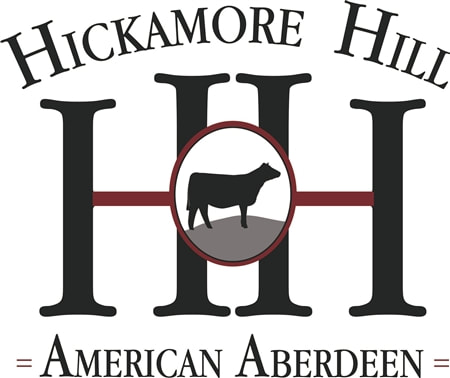Breed Standard for American Lowline Angus
American Aberdeen cattle are a selected strain of Aberdeen Angus cattle bred for many generations for smaller stature, roughage conversion, and efficiency of red meat production. All Fullblood cattle trace directly to the foundation herd in Australia.
Phenotype:
The most discriminating feature of the head should be a well defined prominent poll. The eyes are large and prominent. Females should show no coarseness about the head, which should be angular, of moderate length with a broad forehead. Jaws should be clean and the throat latch free of excessive skin. Ears should not droop, be of medium size and fully haired. Often the face of both sexes will have a slight dish.
The neck should be smooth, of moderate length and blend smoothly at the top of the shoulders. The dewlap should be of modest size with a full brisket in finished cattle. The mature bull should possess masculinity about head and neck without coarseness of shoulder.
The top line of an American Aberdeen should be straight and long. The fore rib should be well sprung with fullness beneath the crops. There should be depth of both front and rear flank and the barrel should be deep and uniform from end to end. Width should be carried from front to rear and the loin should be long and deep with adequate length from the hooks to the pins. The rump should be well muscled in the lower round and stifle.
The American Aberdeen should stand squarely on sound feet and legs of modest length. The rear leg should have a slight angle at the hock when viewed from the side. The feet should be relatively round, have an adequate depth of heel and uniform length of toes. Knees and hocks should be smooth and clean with feet pointing forward. American Aberdeen cattle should have freedom of movement and length of stride.
American Aberdeen cattle are predominantly black in color; however, a red gene (e) and a wild allele (E+) expressing red color have been identified in the breed. Red cattle are accepted for registration. White markings on the underline are not uncommon but should be restricted to the area behind the navel. A white scrotum on bulls is not desirable.
Bulls should show masculinity, libido and adequate scrotal development. The sheath should be trim and free from excess skin showing a retracted prepuce. Females should be feminine, showing longevity with a well-balanced level udder and small teat size. Both sexes should be docile and easy to handle.
Phenotype:
The most discriminating feature of the head should be a well defined prominent poll. The eyes are large and prominent. Females should show no coarseness about the head, which should be angular, of moderate length with a broad forehead. Jaws should be clean and the throat latch free of excessive skin. Ears should not droop, be of medium size and fully haired. Often the face of both sexes will have a slight dish.
The neck should be smooth, of moderate length and blend smoothly at the top of the shoulders. The dewlap should be of modest size with a full brisket in finished cattle. The mature bull should possess masculinity about head and neck without coarseness of shoulder.
The top line of an American Aberdeen should be straight and long. The fore rib should be well sprung with fullness beneath the crops. There should be depth of both front and rear flank and the barrel should be deep and uniform from end to end. Width should be carried from front to rear and the loin should be long and deep with adequate length from the hooks to the pins. The rump should be well muscled in the lower round and stifle.
The American Aberdeen should stand squarely on sound feet and legs of modest length. The rear leg should have a slight angle at the hock when viewed from the side. The feet should be relatively round, have an adequate depth of heel and uniform length of toes. Knees and hocks should be smooth and clean with feet pointing forward. American Aberdeen cattle should have freedom of movement and length of stride.
American Aberdeen cattle are predominantly black in color; however, a red gene (e) and a wild allele (E+) expressing red color have been identified in the breed. Red cattle are accepted for registration. White markings on the underline are not uncommon but should be restricted to the area behind the navel. A white scrotum on bulls is not desirable.
Bulls should show masculinity, libido and adequate scrotal development. The sheath should be trim and free from excess skin showing a retracted prepuce. Females should be feminine, showing longevity with a well-balanced level udder and small teat size. Both sexes should be docile and easy to handle.
